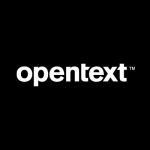I work in the financial industry where the most important thing is PII so the solution's data masking feature is very useful for clients.
The solution operates like a typical SQL Server environment so there is no alienation in terms of technical knowledge. A developer will feel at home using the solution.
The product needs a tool that allows for work from a laptop instead of a browser. When working in on-premises environments, it is important to have all tools installed on a laptop rather than relying on internet connectivity which is a big inconvenience. For example, it would be brilliant to add an integration on Visual Studio to create all pipelines in an offline mode.
The solution cannot store much data and might require purchasing additional storage. For example if you have 1 TB of data, processing it in the solution will cost ten times more than processing it in Databricks.
I have been using the solution for seven months.
The solution's stability is good.
The solution is highly scalable. For example, if you have 100 DWUs, you can increase up to 20,000 DWUs by letting Microsoft know your requirements. Your needs for DWUs will be satisfied based on how much you are willing to pay.
Support wavers depending on the size of the customer. For example, a Fortune 500 customer will receive tremendous support and quick turnaround time.
Smaller customers might find it challenging to receive support.
The initial setup is very easy.
The solution is very expensive because it often requires the purchase of additional storage. Many customers are willing to pay for something that is available in the open source market. If the price of the solution isn't reduced, it will not sell well in the future. I rate the price an eight out of ten.
Our company heavily promotes Databricks because of the solution's cost impact on our clients. Databricks provides a data lake and a warehouse framework that gives the same or better performance when compared to Synapse, but there is a massive learning curve to using it. Most customers are not aware of Databricks so they don't understand it or use it.
Two negatives of Databricks are that it is cloud native with no option for an on-premises server and it does not have good integration with any of the IDs. I provided this feedback while I was in training and their team acknowledged the web browser is an issue to resolve. Most developers do not like to work in a browser environment because accidently hitting F5 will cause complete loss or the internet goes down and all changes are lost. These type of issues do not occur when working in offline mode.
Six months ago, Databricks launched a new product called Databricks SQL that offers multiple platforms such as data engineering with or without a SQL server environment. There is a focus on targeting developers familiar with SQL because the product will only require a different kind of syntax but the SQL environment is still there. Databricks is investing heavily in training developers free of cost and providing certification seminars to increase knowledge of the product as it evolves.
There are use cases for Azure Synapse with customers who do not want to move away from SQL Server or want a similar experience. The solution offers the ability to create an on-premises server with a SQL syntax that is familiar to developers with no learning curve. Most customers prefer Synapse until they realize the high cost and then they switch to Databricks.
I rate the solution an eight out of ten.















